
This post is part of a series where I look at and into the true cost of certain goods and services. When in the previous posts I looked at subsidies and the True Cost (associated with the True Price) for oil and gas, as well as at the True Cost of Energy. (beyond fossil fuels), this time I’d like to look into the True Cost of all types Transport and Mobility: road, rail, aviation and water.
The question therefore is: What are the total costs – the True Cost, i.e. including what is commonly called ‘externalities’ – of the different types of transport we use globally, both for passengers and for freight?
In the case of transport this is particularly interesting because some modes of transport carry a rather large public infrastructure price tag – in addition to the externalities. It is therefore important for the purpose of taking decisions, to look at the Total Cost of Ownership (financial measure) as well as the True Cost (including externalities).
Relevant Definitions: What is a …?
Total Cost of Ownership (TCO)?
The total cost of ownership is the purchase price of an asset plus the costs of operation. Assessing the total cost of ownership represents taking a bigger picture look at what the product is and what its value is over time. When choosing among alternatives in a purchasing decision, buyers should look not just at an item’s short-term price, known as its purchase price, but also at its long-term price, which is its total cost of ownership. These are the long-term costs and expenses incurred during the product’s useful life and ultimate disposal. The item with the lower total cost of ownership is the better value in the long run. (Source: Investopedia)
Example, for manufacturing: TCO is typically compared with doing business overseas. Hence, it goes beyond the initial manufacturing cycle time and cost to make parts. TCO includes a variety of cost of doing business items, such as, ship and re-ship, and opportunity costs, while it also considers incentives developed for an alternative approach. Incentives and other variables include tax credits, common language, expedited delivery, and customer-oriented supplier visits. (Source: Wikipedia)
Externalities?
We have defined these in the last post, but for the purpose of clarity I include once more the very insightful graphic that illustrates what exactly needs to be considered an externality when it comes to transport (and energy as per the last post).
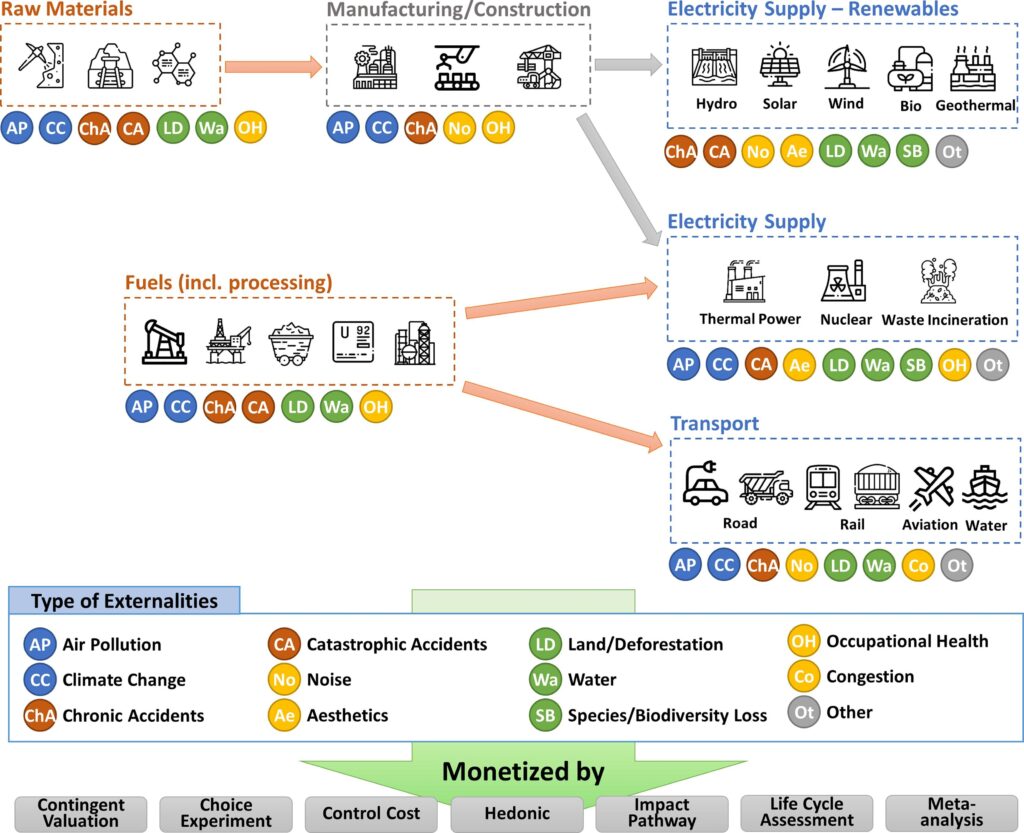
B. K. Sovacool, J. Kim, M. Yang: ‘The hidden costs of energy and mobility: A global meta-analysis and research synthesis of electricity and transport externalities’, Energy Research & Social Science, Volume 72, 2021, ISSN 2214-6296.
True Cost of different types of Transport: The Status Quo
Transport is a rather interesting animal. For one, there is the difference between freight and passenger transport. Some my argue that the first is absolutely required (since it is a direct result of economic activity) where as the latter is largely optional (being predominantly a side-effect of the leisure industry). Whether or not this is the case is not within the realm of this post, but of course per se an interesting discussion to be had.
But just how do different types of transport compare to each other when it comes to ‘collateral damage’?
A paper, published in the Journal of ‘Energy Research & Social Science’ in February 2021, as well as the EU-financed report by CE Delft dating from 2019 and entitled ‘Sustainable transport infrastructure charging and internalisation of transport externalities’ (specifically the ‘Main Findings‘), give us some insights.
Insight 1: Congestions is the suprise cost-generating ‘winner’ when it comes to externalities.
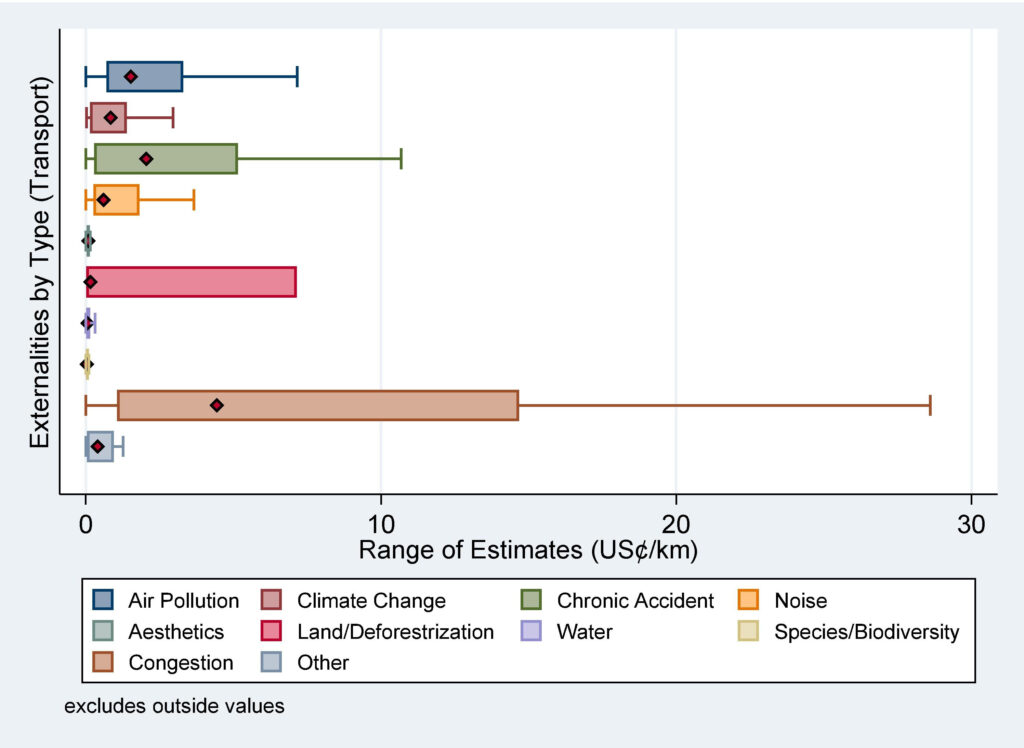
The negative externalities by type associated with transport adjusted to US$2018, ¢/kWh and ¢/km. The range of the monetized estimates is broad. Because of the large standard deviation of aesthetics, air pollution, and congestion, the severity of externalities is changed if they apply mean values instead of the median. In terms of mean, the most severe externality for transport, the mean value indicates congestion as the most costly externality like the median, but air pollution takes second place, followed by accidents, noise, and land degradation. Note: The left end denotes minimum and the right end maximum in the box-and-whisker plots. The red dot means the median, and the left and right end of the box represent the first and third quartiles, respectively.
Insight 2: Road and Air are – nerly as expected – performing rather poorly
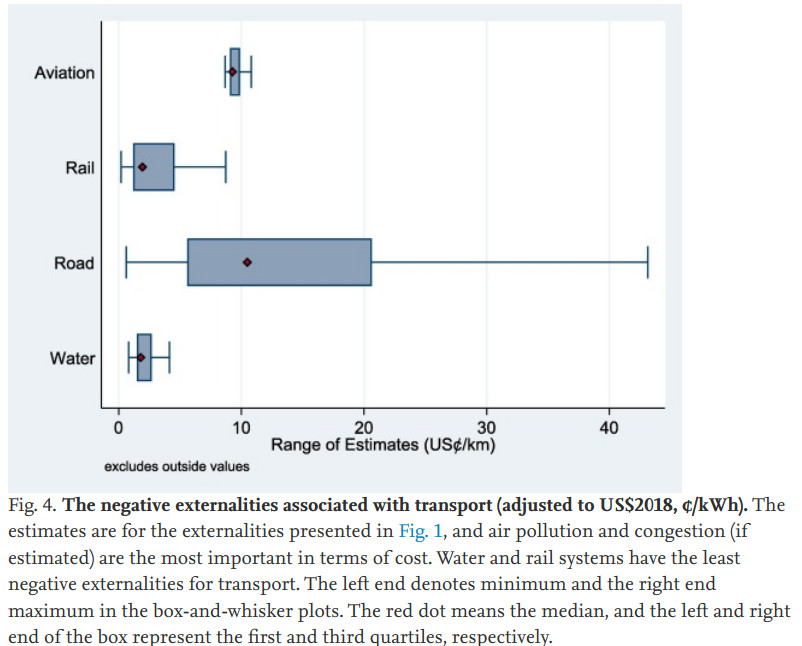
Insight 3: In the EU, not a single mode of transport covers its infrastructure cost
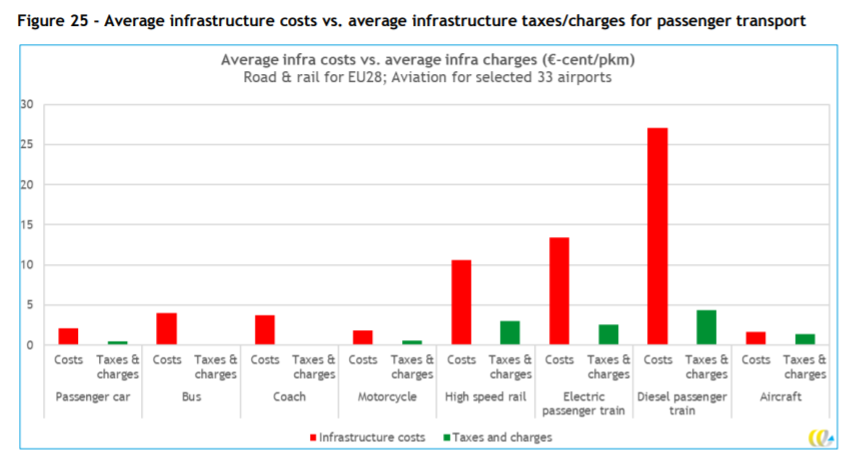
May 2019
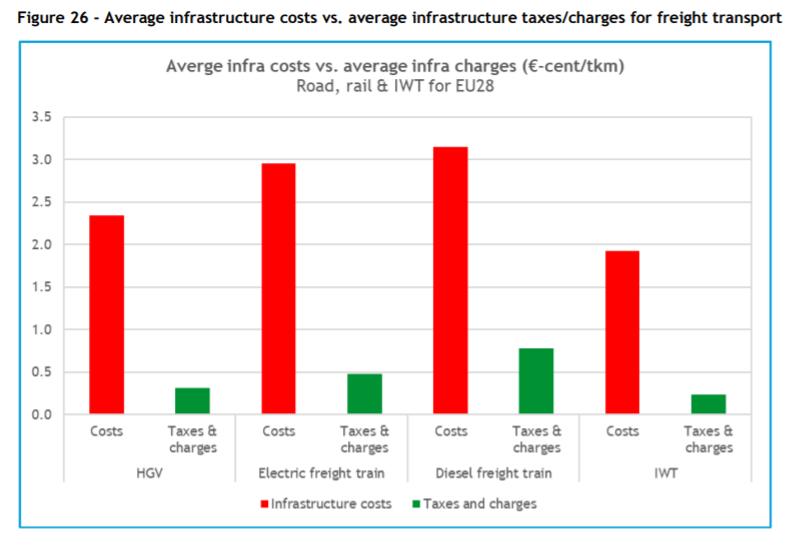
May 2019
Insight 4: Externalities vary significantly across the spectrum of transport modes. The True Cost exceeds any taxes and charges in every single case.
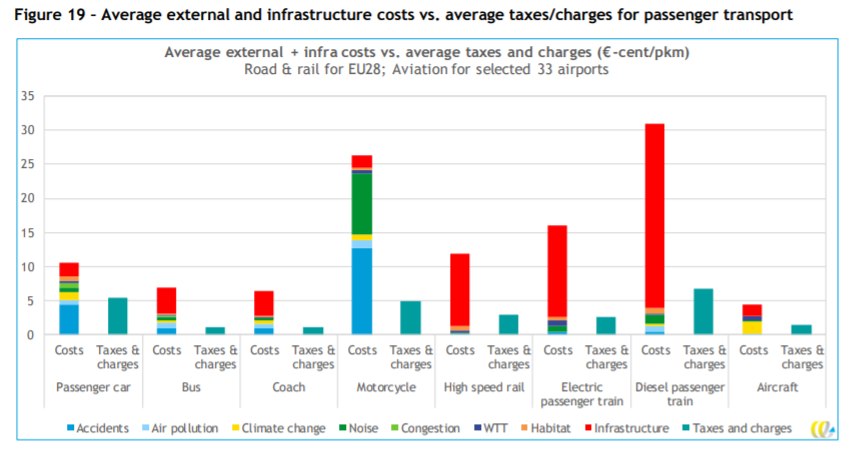
May 2019
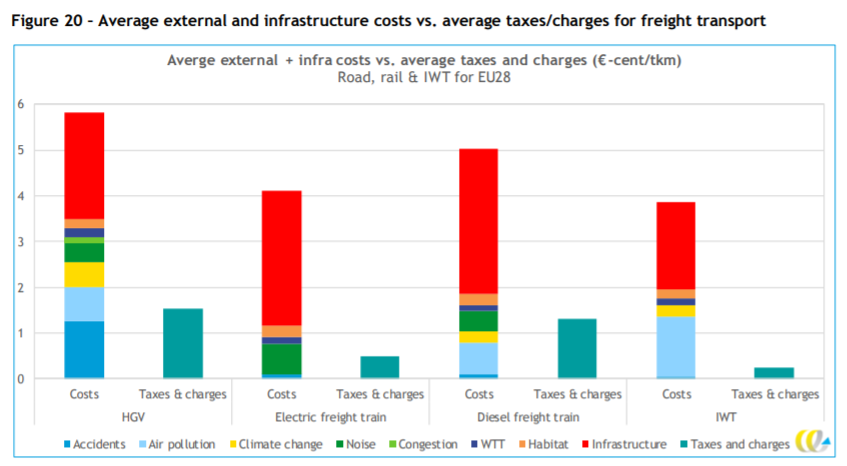
May 2019
The reader my notice that in the above figure (freight), water transport is only listed as IWT, i.e. taking into account ‘inland water transport’. Maritime transport does not turn up. The reason being that necessary data is not available. However, according to the author the soverall cost coverage ratio for international maritime transport is of around 4% (footnote 54 of the report). The low ratio being the consequence of few tax/charging schemes in place for international maritime transport within the EU.
Conclusion
The True Cost of transport is a very complex picture.
One reason being that the relevant externalities are more varied. The other aspect is the relevance of publicly funded infrastructure and its maintenance, which again is linked to a cost recovery scheme through public taxes and charges.
Further, the worlds of private passenger transport and commercial freight transport show significantly different profiles. The significance of Climate Change vs other externalities such as accidents, air pollution or noise is also interesting to observe: again each mode of transport has it’s own very distinct profile.
The illustrations and stats referred to in this post show once more why taking decisions on transport is indeed – and will remain for a while – a key responsibility for governments. As was mentioned in the context of maritime transport (and the lack of data on it): the type of taxes and charges imposed can play a significant role in a variety of ways. Namely: a) to recoup the public investments into infrastructure and its maintenance and b) in order to direct transportation streams, both for passengers as well as freight, towards modes with the lowest total cost. The latter is in as far relevant as non-accounted for externalities are typically covered either by the tax payer or society at large – hence ‘public money’ – , which is precisely why contrasting the True Cost with the current recoup rate is essential.
In the end it becomes clear: there is a lot of work to be done to optimise the impact of so far non-accounted for impacts and their cost on the one hand, and how governments can sensibly and successfully recoup the money they factually invest into these ‘side’ effects on the other.

